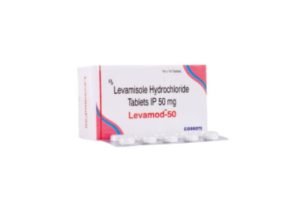
Lincomycin Overview
Lincomycin is an antibiotic in the lincosamide class, structurally related to clindamycin. It works by inhibiting bacterial protein synthesis by binding to the 50S ribosomal subunit, making it bacteriostatic. Lincomycin is primarily used to treat serious infections caused by susceptible gram-positive organisms, particularly when patients are allergic to penicillin.
Brand Names and Formulations
Lincomycin is marketed under the brand names:
- Lincocin
- Lincorex
Common formulations and strengths:
- Injectable Solution: 300 mg/mL in 1 mL, 2 mL, and 10 mL vials.
- Capsules: 500 mg (less commonly used, as clindamycin has largely replaced oral lincomycin).
Uses/Indications
Lincomycin is reserved for the treatment of serious infections caused by susceptible strains of gram-positive bacteria. Common indications include:
- Staphylococcal Infections:
- Staphylococcus aureus, especially methicillin-sensitive S. aureus (MSSA) in patients allergic to penicillin.
- Streptococcal Infections:
- Used for serious infections caused by Streptococcus pneumoniae and Streptococcus pyogenes.
- Serious Skin and Soft Tissue Infections:
- Including cellulitis, abscesses, and wound infections.
- Bone and Joint Infections:
- Used in osteomyelitis or septic arthritis, often as part of combination therapy.
- Upper Respiratory Infections:
- Indicated for severe cases of tonsillitis, pharyngitis, and sinusitis.
- Dental Infections:
- Sometimes used for severe dental infections, especially in penicillin-allergic patients.
Dosage
- Adults:
- Intramuscular (IM) Injection: 600 mg every 24 hours for less severe infections; in more severe cases, up to 600 mg every 12 hours.
- Intravenous (IV) Infusion: 600-1000 mg every 8 to 12 hours, depending on the severity of the infection.
- Pediatric Dosing:
- 10 mg/kg every 12 to 24 hours, depending on the severity of the infection.
- Renal Impairment:
- Dose adjustment may be required as lincomycin is excreted by the kidneys.
Side Effects
Common side effects of lincomycin include:
- Gastrointestinal Effects:
- Diarrhea, nausea, vomiting, and abdominal pain. There is also a risk of Clostridium difficile-associated diarrhea (CDAD), which can lead to severe colitis.
- Allergic Reactions:
- Rash, urticaria, and, rarely, anaphylaxis.
- Injection Site Reactions:
- Pain, swelling, and irritation at the IM injection site.
- Hematologic Effects:
- Rare occurrences of neutropenia, thrombocytopenia, and agranulocytosis.
- Liver and Kidney Effects:
- Elevated liver enzymes (hepatitis) and rare reports of jaundice. Renal dysfunction is also possible.
Contraindications
Lincomycin is contraindicated in:
- Hypersensitivity:
- Allergy to lincomycin or clindamycin.
- Clostridium difficile-Associated Diarrhea:
- History of C. difficile infection, as lincomycin is strongly associated with the development of pseudomembranous colitis.
- Severe Hepatic or Renal Impairment:
- Use with caution in patients with significant liver or kidney dysfunction, and dosage adjustments may be necessary.
Drug Interactions
- Neuromuscular Blocking Agents:
- Lincomycin may enhance the effects of neuromuscular blocking agents, such as vecuronium or succinylcholine, leading to prolonged paralysis.
- Macrolide Antibiotics:
- Concurrent use with macrolides (e.g., erythromycin) should be avoided due to potential competitive inhibition at the 50S ribosomal subunit.
- Kaolin:
- Kaolin-based antidiarrheals can reduce lincomycin absorption when taken concurrently.
- Warfarin:
- May potentiate the anticoagulant effects of warfarin, increasing the risk of bleeding.
Special Considerations
- Clostridium difficile Infection Risk:
- Lincomycin carries a significant risk of C. difficile-associated diarrhea, so its use should be restricted to serious infections where other antibiotics are not appropriate. Patients should be monitored for signs of severe diarrhea.
- Renal and Hepatic Monitoring:
- In patients with preexisting liver or kidney disease, regular monitoring of liver enzymes and renal function is recommended.
- Use in Pregnancy:
- Classified as Pregnancy Category C. It should only be used in pregnancy if clearly needed, as there are no well-controlled studies in humans, though animal studies have shown some risk.
- Breastfeeding:
- Lincomycin is excreted in breast milk, so caution is advised in nursing mothers. Breastfeeding may need to be discontinued during treatment.
- Cross-Resistance with Clindamycin:
- Bacteria that are resistant to clindamycin may also be resistant to lincomycin.
Conclusion
Lincomycin is an effective antibiotic for treating serious infections caused by gram-positive bacteria, particularly when penicillin allergies limit other options. However, its use is limited by significant risks, including C. difficile-associated diarrhea and interactions with neuromuscular blockers. Clindamycin has largely replaced lincomycin for many indications due to better oral absorption and a more favorable side-effect profile. Careful patient monitoring and limiting its use to appropriate cases help minimize risks while ensuring therapeutic benefit.







